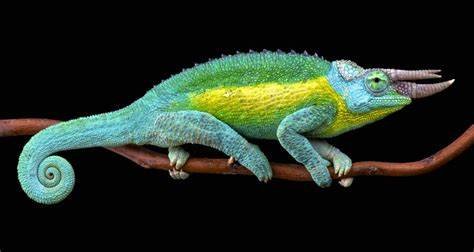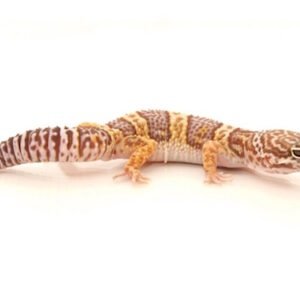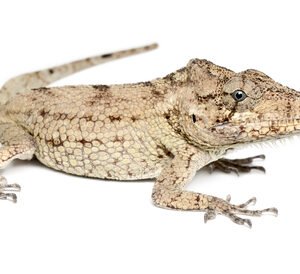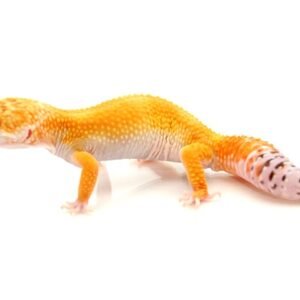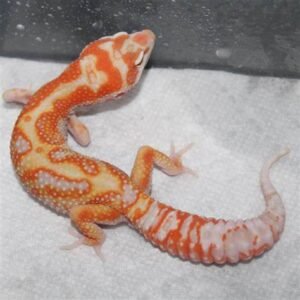Understanding Jackson’s Chameleons: Unique Creatures of the Reptile World
Introduction to Jackson’s Chameleons
Jackson’s chameleons, scientifically known as Trioceros jacksonii, are remarkable reptiles that belong to the family Chamaeleonidae. They are best known for their vibrant colors and distinct characteristics, which have made them popular both in the wild and as exotic pets. These fascinating creatures are indigenous to the forests and mountains of East Africa, particularly in Kenya and Tanzania. Their unique adaptations to this specific habitat allow them to thrive in their native environment, where they play a crucial role in maintaining ecological balance.
Discovered in the late 19th century, Jackson’s chameleons were initially studied for their intriguing behavior and physiology. They are particularly notable for their ability to change color, a trait that serves both defensive and communicative purposes. Their striking appearance, which includes three distinct horn-like protrusions on males, sets them apart from other chameleon species. This feature, alongside their vibrant coloration, captures the interest of both herpetologists and pet enthusiasts alike.
In terms of ecological significance, Jackson’s chameleons contribute to the biodiversity of their habitats by controlling insect populations and serving as prey for various larger animals. Their role as both predator and prey highlights the interconnectedness of life within their ecosystems. The species also faces threats due to habitat loss and climate change, making their conservation increasingly important. Understanding Jackson’s chameleons is vital not only for the protection of these unique reptiles but also for the preservation of their natural habitats. This introduction serves to illuminate the captivating world of Jackson’s chameleons, paving the way for a deeper appreciation of their uniqueness and the importance of their conservation.
Physical Characteristics and Coloration
Jackson’s chameleons (Trioceros jacksonii) are distinguished by their remarkable physical attributes, most notably their three prominent horn-like projections on the head. This unique characteristic, which is more pronounced in males, serves as a visual cue for species recognition and plays a significant role in mating displays. Adult males can measure up to 10 inches in length, while females are typically smaller, reaching about 7 inches. The variation in size and horn development among genders is a remarkable example of sexual dimorphism in reptiles.
In terms of coloration, Jackson’s chameleons exhibit a diverse palette that varies significantly based on environmental factors, mood, and social interactions. Their skin can shift between shades of green, yellow, blue, and even brown, allowing them to blend seamlessly into their surroundings. This adaptability not only aids in camouflage but also serves vital functions during territorial disputes and courtship. Males often showcase vivid colors and patterns to assert dominance or attract potential mates, using bright displays as a form of communication.
Another fascinating aspect of their coloration is the presence of specialized cells called chromatophores, which contain different pigments. These cells respond to various stimuli, including temperature, light, and emotional states, allowing Jackson’s chameleons to exhibit quick changes in appearance. Such adaptability highlights their evolutionary success in navigating diverse habitats. Their ability to modify color and pattern in real time is a sophisticated survival mechanism, providing an essential advantage against predators while also facilitating interactions with other chameleons.
Habitat and Behavior
Jackson’s chameleons, scientifically known as Chamaeleo jacksonii, are primarily found in the mountainous regions of East Africa, particularly in Kenya and Tanzania. These reptiles thrive in humid, tropical forests, where they exhibit a strong preference for living amongst dense foliage and vegetation that provides ample cover. The ideal climate for Jackson’s chameleons consists of warm temperatures complemented by high humidity levels, which are critical for their overall health and well-being. They are often spotted basking on branches, taking advantage of sunlight while remaining camouflaged among the leaves.
In terms of behavior, Jackson’s chameleons are predominantly arboreal, spending most of their time in trees and shrubs. Their remarkable coloration, which can range from vibrant greens to subdued browns, allows them to blend seamlessly into their environment. This effective camouflage serves as both a protective mechanism against predators and a strategy for ambush hunting. They primarily feed on insects, such as crickets and grasshoppers, utilizing their long, sticky tongues to catch prey from a distance with precision. Their feeding habits are intricately linked to their habitat, as the availability of food sources directly influences their hunting patterns.
Jackson’s chameleons exhibit fascinating movement patterns characterized by slow and deliberate locomotion when traversing their arboreal habitat. This cautious approach minimizes detection by both predators and prey. Social interactions among these chameleons can be quite complex. Males, in particular, are known to display territorial behavior, often engaging in displays of brightness and body language to assert dominance over rivals. Breeding behaviors are also driven by visual signals, wherein males will exhibit distinct color changes to attract females or ward off competitors. Overall, Jackson’s chameleons possess a unique array of adaptations that enable them to thrive in their specific ecological niches, ultimately highlighting the intricate relationships they maintain within their habitats.
Conservation and Care in Captivity
Jackson’s chameleons, native to the mountainous regions of East Africa, have become increasingly vulnerable due to several environmental threats. Habitat destruction primarily resulting from deforestation and land conversion for agriculture poses significant risks to these unique reptiles. Additionally, climate change can disrupt the delicate ecosystems in which these chameleons thrive, leading to further habitat degradation and complications in their survival. As a result, Jackson’s chameleons are currently listed as a species of concern, highlighting the urgent need for conservation efforts to protect their natural habitats and populations.
For those interested in keeping Jackson’s chameleons as pets, it is essential to understand their specific care requirements to ensure their well-being. To create an ideal habitat for these reptiles, a spacious enclosure with adequate vertical height is necessary, as they are arboreal creatures that enjoy climbing. The enclosure should incorporate various branches, foliage, and hiding spots to mimic their natural environment. Proper temperature gradients are crucial, with a basking area reaching 80-85°F and cooler areas around 70-75°F. Humidity levels should be maintained between 50-70% to promote healthy skin shedding and overall hydration.
Feeding Jackson’s chameleons involves a diet of live insects, primarily crickets, roaches, and various worms. It’s important to ensure that these insects are gut-loaded with nutritious foods before offering them to the chameleon. Additionally, calcium and vitamin supplementation should be provided to prevent metabolic bone disease, a common health issue among captive chameleons. Regular health checks are vital to monitor for signs of illness or stress, and owners must be prepared for the commitment involved in caring for these extraordinary reptiles. Understanding their needs will lead to a healthier and more fulfilling life for both the chameleon and its owner.

